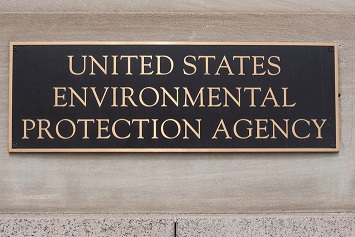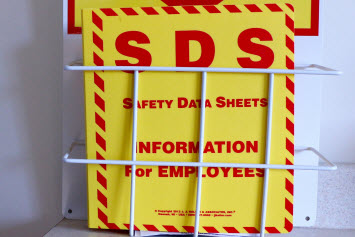In a congressional hearing, a lineup of advocates for worker safety faulted the way the EPA is using its new authority under the 2016 amendments to the Toxic Substances Control Act (TSCA) to shield workers from the occupational exposure to hazardous chemicals.

The amendments direct that in reducing the risks of exposure to these chemicals, the Agency must consider the risks to “susceptible subpopulations,” which the amendments define as groups that may be at greater risk than the general population, including but not limited to “infants, children, pregnant women, workers, or the elderly.” But in testimony before the House Subcommittee on Environment and Climate Change, witnesses said that in implementing the law, the Agency is missing opportunities to reduce exposure experienced by groups that include autoworkers, firefighters, and teachers.
Criticisms of how the Agency is fulfilling its responsibility come from several directions. For example, according to Rep. Paul Tonko (D-NY), who chairs the subcommittee, the EPA’s risk prioritization rule, one of several rules the Agency has promulgated to implement the amendments, allows the EPA to exclude consideration of commercial uses of a chemical and occupational exposure to it. This is occurring even though one witness claimed that occupational exposures can be tens of thousands to a million times higher than those experienced by the general population. Also, another implementation rule detailing the Agency’s procedures for conducting risk evaluations allows the EPA to exclude “legacy uses” of a chemical from an evaluation. A legacy use is one that is no longer allowed; however, legacy uses have left significant amounts of hazardous chemicals in workplace environments. A representative from the International Association of Firefighters (IAFF) said firefighters are routinely exposed to legacy asbestos and hexabromocyclododecane (HBCD), a flame retardant, released into the ambient air by extreme heat.
“[Fire]fighters enter burning buildings, extinguish fires, and open walls and ceilings to check for fire extension; all three tasks expose [fire]fighters to asbestos fibers,” said the IAFF’s Paul Morrison. “These activities are daily occurrences, and while the asbestos to which they are exposed is legacy, these are technically new exposures.”
OSHA’s Role
Other hazardous chemicals the Agency is evaluating for risk include methylene chloride (MC) and pigment violet 29 (PV-29). For both substances, the EPA has decided not to include occupational exposures in its risk evaluations. The Agency appears to be assuming that OSHA is providing workers with adequate protections from these substances. But one witness, who formerly served as OSHA’s director of health standards and also as an OSHA regional director, provided a detailed explanation on why OSHA is limited in what it can do regarding hazardous chemicals in the workplace while the EPA has significantly more regulatory power.
Another witness, an attorney who has worked as counsel for chemical companies for over 20 years, said the EPA is meeting its responsibilities under the TSCA amendments, even while the Agency’s resources are stretched to the maximum. Regarding asbestos, Mark N. Duvall, currently a principal with the law firm Beveridge & Diamond, said TSCA is not a good statute for addressing legacy asbestos and that several OSHA standards, as well as the EPA’s National Emissions Standards for Hazardous Air Pollutants (NESHAP) for asbestos, provide better tools to safely remove and dispose of asbestos from buildings and structures.
Hearing participants also discussed how the EPA addresses worker chemical exposures under the Clean Air Act’s Risk Management Program covering facilities with hazardous chemicals and the Worker Protection Standard and Certified Pesticide Applicator rules, both of which the Agency issued to reduce farmworkers’ and others’ exposure to agricultural pesticides. Testimony on those issues is available at the subcommittee’s website.
Firefighters
According to Morrison, firefighters are being harmed due to the EPA “systemically ignoring exposure risks in its loose implementation” of the TSCA amendments. Morrison notes that the IAFF was pleased that the EPA included both asbestos and HBCD in the list of the first 10 chemicals for which the Agency would develop risk evaluations. Firefighters are regularly exposed to these chemicals through their work, Morrison said before focusing on the shortcomings of the Agency’s risk-reduction plan.
“Unfortunately, despite the clear danger asbestos and HBCD pose to our members and their demonstrable regular exposure, the EPA failed to include [fire]fighters as a susceptible subpopulation in their problem formulation document for asbestos released in May 2018,” Morrison added. “The HBCD problem formulation document was more general, stating EPA will evaluate susceptible subpopulations, including occupational nonusers. Furthermore, the EPA also removed the evaluation of both legacy HBCD and legacy asbestos, including disposal, from such documents. We find these omissions unfathomable. With their removal, EPA is no longer evaluating a large population of workers experiencing regular and significant exposure.”
Morrison called attention to an incident in August 2017 when firefighters from the Honolulu Fire Department responded to a seven-alarm fire, where they had no knowledge that asbestos was present. It wasn’t until after the fire that the firefighters were notified of potential asbestos exposure. This resulted in mass bagging of gear, thorough cleaning, and the fear of the unknown health effects associated with the exposure. As a result, over 100 firefighters may have been exposed and subjected to an increased risk of health effects. Unless the EPA includes asbestos legacy uses in its risk evaluation, it will be ill-prepared to require owners of buildings and structures with asbestos to take actions to reduce such risks, said Morrison.
Methylene Chloride
MC is a solvent used in commercial and consumer applications, such as paint stripping and surface refinishing. From 2000 to 2011, 13 Americans died from acute exposure to MC while refinishing bathtubs. In January 2017, the EPA proposed banning MC’s commercial and consumer use as a paint stripper. But in a final rule, the EPA has not followed through with the commercial prohibition. Instead, in a separate advanced notice of proposed rulemaking, the Agency is soliciting public input on potential training, certification, and limited-access requirements that “could address any unreasonable risks that EPA could potentially find to be presented by methylene chloride when used for commercial paint and coating removal.” Tonko called attention to MC’s deadly trail.
“At least four people have died since the proposed rule was published in January 2017,” said Tonko.
Part of the EPA’s reluctance to ban commercial uses of MC derives from an existing OSHA standard that sets the workplace permissible exposure limit (PEL) for the substance at 25 parts per million (ppm). But experience with the OSHA standard highlights the difference between OSHA and EPA regulations, noted Adam M. Finkel, the former OSHA official and currently a professor of environmental health sciences at the University of Michigan. Finkel said he led the development of OSHA’s MC standard in the 1990s. At that time, Finkel continued, OSHA recognized that the 25 ppm PEL was too high, but the agency could not issue the preferred PEL of 10 ppm because it had failed to perform the required economic feasibility analysis. Even at that lower level, said Finkel, the risk of severe acute or chronic illness was reduced to only 1 in 1,000.
“In various federal environmental statutes, Congress has instructed EPA to reduce grave risks to a level of one chance in one million where possible,” testified Finkel. “OSHA, however, has always chosen to interpret the 1980 Supreme Court decision in the Benzene case to require it only to reduce worker risks to below one chance per thousand.”
Moreover, he added, “employers have widely failed to comply even with that weak exposure limit.”
PV-29 and the HCS
Finkel expands his comparison of the EPA and OSHA in the context of PV-29, a colorant used in the production of automotive paint and fiber dye. The substance was the subject of the first risk evaluation under the TSCA amendments. In 2018, the EPA released its draft evaluation, which found that PV-29 presented no unreasonable risk. Worker exposure consideration was excluded from the evaluation.
Finkel believes this decision by the EPA is based on an “imagined OSHA authority” that doesn’t exist. Specifically, in the draft evaluation, the EPA states that occupational exposures to PV-29 are likely to be limited due to the expected use of personal protective equipment (PPE), mainly respirators. Finkel calls this statement “doubly inaccurate.” First, he states that respirators are hard to fit properly, are prone to leakage both through the filter media and at the seal with the wearer’s face, and can place a physiological and a safety burden on the user. But the larger problem is a misunderstanding of OSHA’s Hazard Communication Standard (HCS), which requires that chemical manufacturers provide downstream users with safety data sheets (SDSs) that include information on keeping exposure to chemicals to a safe level.
“EPA is assuming that recommendations by the manufacturer of a toxic chemical, present on the SDS, create any obligation on the part of the employer,” explains Finkel. “This is the most fundamental misreading possible of the entire HCS, which creates obligations for manufacturers to create and disseminate accurate information, and for employers to make the SDSs available to workers, but as the standard clearly says, ‘while the … HCS requires the provision of information on recommended control measures, including respiratory protection, personal protective equipment, and engineering controls, there is no requirement for employers to implement the recommended controls. An employer should use all available information when designing an appropriate protective program, but a recommendation on a Safety Data Sheet by itself would not trigger the need to implement new controls.”

Assumptions About Employers
In his testimony, Duvall agrees that the EPA does make TSCA safety determinations for a chemical’s use in occupational settings based on PPE recommendations in SDSs. Duvall focused part of this testimony on TSCA regulatory determinations the EPA completes for new chemicals intended for the market. Before producing their products, manufacturers must notify the EPA of new chemicals in Premanufacture Notices (PMNs). According to Duvall, the EPA has made required not likely to present an unreasonable risk to workers findings based on PPE recommendations in SDSs. There is some rigor in these recommendations. For example, manufacturers must include the protective measures in SDSs. Furthermore, when considering the submitter’s intended conditions of use, the EPA must also consider whether the protective measures are sufficient for reasonably foreseen uses of the hazardous chemical. Importantly, according to Duvall, the basic policy at the EPA is that employers will follow the SDS recommendations, including intended use of PPE. He uses the example of an SDS protective measure regarding impervious gloves, which was included in a PMN.
“It is certainly possible that some employers might not require their workers to use impervious gloves when handling this PMN substance,” said Duvall. “EPA evidently considered that this possibility is speculative, not ‘reasonably’ foreseeable, given the OSHA requirements applicable to all manufacturers and processors of PMN substances.”
The different views of Finkel and Duvall may accurately represent general disagreement among stakeholders on the extent to which the EPA should rely on OSHA standards in meeting its TSCA responsibilities.

